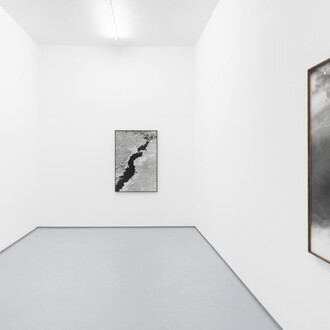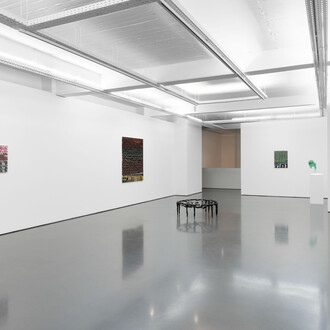Inventing the world - Even if we cannot see it, it may still be real.
(Gerhard Richter)
This exhibition focuses on the analysis of a set of works from the Berardo Collection in which the artists have made free and creative use of line, form and colour, elements which are intrinsically linked to our lives, to all that we see, touch and feel and can be considered the main building blocks of abstract art since the beginning of the 20th century.
The onset of photography at the turn of the 19th century made all forms of naturalistic and imitative painting incongruous and led artists to debate, question and reject the concept of art. But the 20th century was not just limited to debating, questioning and rejecting the concept of art; it also concerned itself with defining it and redefining it, testing its possibilities through a profusion of styles and movements.
Based on four artists represented in the Berardo Collection – Malevich, Mondrian, Josef Albers and Ad Reinhardt – this exhibition aims to analyse abstract art, and the vast range of actions and expressive possibilities it gave rise to, through the tension that exists between its various branches (non-objective, non-figurative, absolute and concrete).
Abstract art emerged at the start of the 20th century out of the experimentation of Europe’s avant-garde movements, which rejected the Renaissance legacy of the art academies and used the pure elements of the visual arts – such as colour, line and geometric form – to create art in a non-representational and absolutely free way. However, it was in the 1940s, in the post-war period, that abstract art truly came to prominence. Beginning in Paris, from seeds sown by Dutch, Russian and German émigré artists, it went on to conquer all of Europe and beyond, crossing borders, continents and oceans. It reflected the state of mind of the artists, who had been profoundly touched and affected by the shock waves that had buffeted civilisation, culture and art.
It is in this state of mind, coupled with the sense of freedom that was rife and the belief in a universal borderless art, that the triumph of abstract art in the post-war period lies.
Malevich was the first artist to make a serious attempt at absolute painting, stripped of any objective allusion, through the supremacy of colour and form that would allow us to experience the pure sensation and dynamic nature of the artwork. His thinking deeply influenced the work of such artists as Yves Klein, Manzoni and Robert Ryman.
For Piet Mondrian, the elimination of the real and the visible was a philosophical and transcendental principle achieved through an aesthetic purity created from the elements and pure colours. Mondrian and the De Stijl movement influenced the artists of Action Painting, monochromatic art, kinetic art, zero painting and Op Art.
Josef Albers, who was influenced by De Stijl, explored the extreme reduction of form, which he realised with great pictorial and technical perfection. His major paintings, the Homage to the Square series, painted from 1950 onwards, clearly show how elementary things are inexplicable. The sense of insecurity that his works instil is, without doubt, major proof of the fallibility of our perception. The combination of the perceptual possibilities is endless and our gaze’s inability to identify them is painfully obvious, both physically and mentally.
One requires enormous sensitivity to capture his nuances and recognise the originality of his work. For Reinhardt, painting could only be conceptualised as the product of a culture at the edge of the end. His paintings draw close to zero point, the non-visible. In the 1950s, he only used one colour, switching from blue to black and its capacity for endless variation through the addition of primary colours. A black that includes all colours, that means everything, precisely because it is negative, creating an art that is pure and empty, absolute, exclusive, non-objective, non-representative, non-expressionist, independent, timeless and non-subjective.
Today, with the detachment that time affords, we can conclude that abstract art was not unifying; it neither abolished beauty nor eliminated individualism. On the contrary, it gave rise to myriad expressive possibilities, some of which we will try to analyse in this exhibition through the concepts, intuitions and feelings that the artists explore and that trigger different emotions and interpretations, thus making them emancipating and renouncing the messages that are imposed on us.
Works by Josef Albers, Fernando Calhau, Alan Charlton, Noronha da Costa, José Pedro Croft, Ian Davenport, Fernanda Fragateiro, Al Held, Gary Hume, Ann Veronica Janssens, Peter Joseph, Yves Klein, Imi Knoebel, José Loureiro, Kazimir Malevich, John McCracken, Ana Mendieta, Piet Mondrian, Bruce Nauman, Ad Reinhardt, Pedro Cabrita Reis, António Sena, Ângelo de Sousa, Frank Stella, Hiroshi Sugimoto, Cy Twombly and Victor Pires Vieira.
















